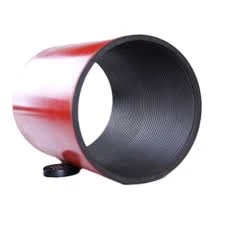- Afrikaans
- Albanian
- Amharic
- Arabic
- Armenian
- Azerbaijani
- Basque
- Belarusian
- Bengali
- Bosnian
- Bulgarian
- Catalan
- Cebuano
- Corsican
- Croatian
- Czech
- Danish
- Dutch
- English
- Esperanto
- Estonian
- Finnish
- French
- Frisian
- Galician
- Georgian
- German
- Greek
- Gujarati
- Haitian Creole
- hausa
- hawaiian
- Hebrew
- Hindi
- Miao
- Hungarian
- Icelandic
- igbo
- Indonesian
- irish
- Italian
- Japanese
- Javanese
- Kannada
- kazakh
- Khmer
- Rwandese
- Korean
- Kurdish
- Kyrgyz
- Lao
- Latin
- Latvian
- Lithuanian
- Luxembourgish
- Macedonian
- Malgashi
- Malay
- Malayalam
- Maltese
- Maori
- Marathi
- Mongolian
- Myanmar
- Nepali
- Norwegian
- Norwegian
- Occitan
- Pashto
- Persian
- Polish
- Portuguese
- Punjabi
- Romanian
- Russian
- Samoan
- Scottish Gaelic
- Serbian
- Sesotho
- Shona
- Sindhi
- Sinhala
- Slovak
- Slovenian
- Somali
- Spanish
- Sundanese
- Swahili
- Swedish
- Tagalog
- Tajik
- Tamil
- Tatar
- Telugu
- Thai
- Turkish
- Turkmen
- Ukrainian
- Urdu
- Uighur
- Uzbek
- Vietnamese
- Welsh
- Bantu
- Yiddish
- Yoruba
- Zulu
Durable Stainless Steel Threaded Couplings for Secure Connections in Various Applications
Understanding Stainless Steel Threaded Couplings A Comprehensive Overview
Stainless steel threaded couplings are essential components in various industrial and plumbing applications, known for their durability, corrosion resistance, and strength. As a crucial part of piping systems, these fittings facilitate the connection of pipes, allowing for fluid and gas transportation throughout various infrastructures.
What is a Threaded Coupling?
A threaded coupling is a type of fitting that connects two pieces of pipe. It features internal threads that allow the coupling to attach to the external threads of the pipes. This design forms a tight seal, ensuring that there are no leaks, which is especially vital in systems carrying pressurized fluids and gases. Threaded couplings can vary in size and configuration, making them versatile for different applications.
The Advantages of Stainless Steel
Stainless steel is renowned for its resistance to corrosion, making it an ideal material for couplings used in environments exposed to moisture, chemicals, and extreme temperatures. Unlike iron or carbon steel, which can rust and degrade over time, stainless steel maintains structural integrity and performance in challenging conditions. This property extends the lifespan of the fittings and reduces the need for frequent replacements, ultimately offering cost savings and enhancing operational efficiency.
In addition, stainless steel threaded couplings can withstand high pressures and temperatures. This makes them suitable for use in industries such as oil and gas, petrochemical, water treatment, and food processing, where safety and reliability are paramount. The ability to maintain strength under demanding conditions distinguishes stainless steel from other materials.
Types of Stainless Steel Threaded Couplings
There are several types of stainless steel threaded couplings, each serving specific applications
stainless steel threaded coupling

1. Standard Couplings These are the most commonly used couplings that connect two pipes of the same diameter. They can be used in a variety of settings, from residential plumbing to industrial piping systems.
2. Reducing Couplings These fittings connect pipes of different diameters. They are often used in applications where the flow of fluid needs to be controlled or reduced as it moves through a system.
3. Hex Couplings Featuring a hexagonal shape to facilitate easier gripping and tightening, hex couplings are practical for applications requiring a robust connection under vibration or movement.
4. Slip Couplings These couplings slip over one of the pipes and are secured in place, allowing for adjustments in length when connecting two pipes.
Installation and Maintenance
Installation of stainless steel threaded couplings typically involves applying Teflon tape or pipe sealant on the male threads to enhance sealing and prevent leaks. It's crucial to tighten the fitting adequately but avoid over-tightening, which can lead to thread stripping or damage to the coupling.
Maintenance of these couplings is minimal, but regular inspections are advisable, especially in high-pressure or high-temperature applications. Checking for signs of wear, leaks, or corrosion can prevent failures that might lead to costly downtime or hazardous situations.
Conclusion
Stainless steel threaded couplings are indispensable in ensuring the efficiency and reliability of pipelines across various industries. Their durability and resistance to corrosion make them a preferred choice for many applications. By understanding the types, advantages, and maintenance of these fittings, businesses can make informed decisions that enhance their operational efficacy. Investing in quality stainless steel threaded couplings is not just a matter of compliance but a step toward ensuring safety and longevity in piping systems. Whether in residential plumbing or industrial applications, these couplings play a pivotal role in keeping systems running smoothly and efficiently.
-
Tubing Pup Joints: Essential Components for Oil and Gas OperationsNewsJul.10,2025
-
Pup Joints: Essential Components for Reliable Drilling OperationsNewsJul.10,2025
-
Pipe Couplings: Connecting Your World EfficientlyNewsJul.10,2025
-
Mastering Oilfield Operations with Quality Tubing and CasingNewsJul.10,2025
-
High-Quality Casing Couplings for Every NeedNewsJul.10,2025
-
Boost Your Drilling Efficiency with Premium Crossover Tools & Seating NipplesNewsJul.10,2025







